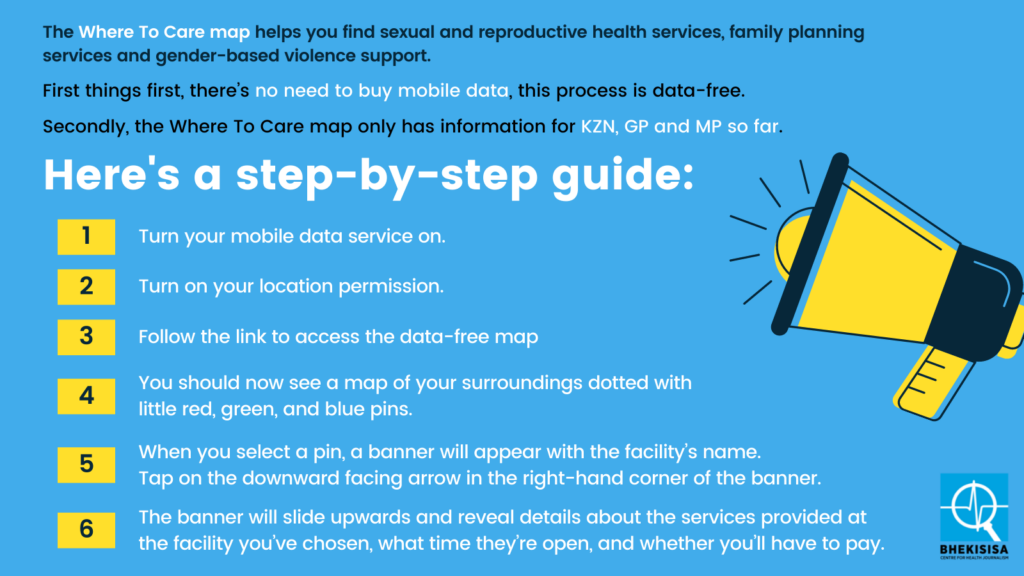- Back in 2020, when South Africa’s coronavirus lockdown was at its strictest, Bhekisisa told the story of a woman planning her escape from an abusive home.
- Research shows that isolation and quarantine conditions place women and children at a higher risk of abuse.
- This tool developed by the Triad Trust and The Foundation for Aids Research, Amfar, will point you to the gender-based violence services closest to you – no data needed.
Lee-Ann Jephtas* is pretending to be asleep, waiting.
It’s day 25 of South Africa’s national lockdown, put in place in March 2020 to stop the spread of the coronavirus.
Jephtas is lying frozen next to her husband of 12 years in their Paarl home, about an hour’s drive from Cape Town.
Still dozing, her husband’s features are uncharacteristically tranquil. He’s a violent man.
A week earlier, he had threatened to end her life.
“I’ll drive us into oncoming traffic,” he had said, nostrils flaring, “then I’ll swerve the bakkie so that you get hit by a truck.”
Jephtas has endured his abuse for nearly a decade. The beatings could come at the smallest infringements of his rules.
For instance, when she doesn’t have dinner ready at exactly 18:00. This time, she’d forgotten to buy toilet paper.
He snarled: “I’ll kill you.”
It’s just past 06:00 now, around the time Jephtas would usually start her day.
The 33-year-old-mother gets up, gets dressed, and walks out of the room.
She’s leaving today, with the three children. They’re going to a shelter for survivors of gender-based violence nearby.
But they’ll have to be quick – and quiet.
Read the rest of Le-Ann’s story here.
*Not her real name.
Need help? Check out this handy tool
Experience from previous pandemics and public health emergencies have shown that isolation and quarantine set-ups put women and children at an increased risk of abuse — for the simple reason that they are more exposed to potential perpetrators. Controlling behaviours may also be coping mechanisms for perpetrators who feel a loss of control due to quarantine.
“Isolation is an established abuse tactic for intimate partner violence even outside of pandemic contexts,” write the authors of a rapid review conducted by an independent research team called the “Gender and COVID-19 Working Group”.
Now, if you know somebody who’s in danger or you need help yourself, there’s a tool you can use to get verified information about services near you.
The Triad Trust and The Foundation for Aids Research, Amfar, have developed a tool that connects people with care through a data-free link. It’s called the Where To Care map. Bhekisisa partnered with the Trust in April to support their mapping project.
Read how Bhekisisa was involved in the map’s conception here.
Which services can you find on Where To Care?
- Sexual and reproductive health services (such as counselling)
- Comprehensive family planning services (such as voluntary medical male circumcision and termination of pregnancy)
- Gender-based violence support (such as legal support and post-assault services)
How does it work?
First things first, there’s no need to buy mobile data, this process is data-free. Secondly, the Where To Care map only has information for KwaZulu-Natal and Gauteng so far.
Here’s a step-by-step breakdown of how it works.
Step 1: Turn your mobile data service on.
Step 2: Turn on your location permission.
Step 3: Click on this link.
Step 4: You should now see a map of your surroundings dotted with little red, green, and blue pins.
- Red: Facilities that do not meet the safety standards for abortion.
- Blue: These facilities have gone through round one of the verification process.
- Green: Both rounds of verification are done (see below for more on the verification process).
Step 5: When you select a pin, a banner will appear with the facility’s name. Tap on the downward facing arrow in the right-hand corner of the banner.
Step 6: The banner will slide upwards and reveal details about the services provided at the facility you’ve chosen, what time they’re open, and whether you’ll have to pay.
Take note: The map on the Where To Care website is not data-free, it’s only this link that’s zero-rated.

I’m struggling with this process, what do I do?
If you need assistance, you can contact Bhekisisa on any of our social media accounts. We can send you a data-free link to the map as well.
Where does this data come from?
The Where To Care Map is kept updated by the Triad Trust’s team of trained mappers who make thousands of calls each month to make sure the information is fresh.
For round one of verification, mappers call facilities and explain the mapping project they’re working on. Then they ask questions about the type of services offered there, including for example when services are offered and whether people can expect charges.
During round two, different mappers call the facility as a “secret shopper” (they pretend to be a patient) to find out whether the information provided matches up.
The map is updated roughly every three to six months.
Where does my personal information go?
The Triad Trust does not collect any information about the people who use the links to the map, so your privacy is ensured.
Click here for more information on their methodology and its limitations, privacy, and terms and conditions.
Joan van Dyk was a health journalist, senior health journalist and news editor at Bhekisisa between 2017 and 2023.





